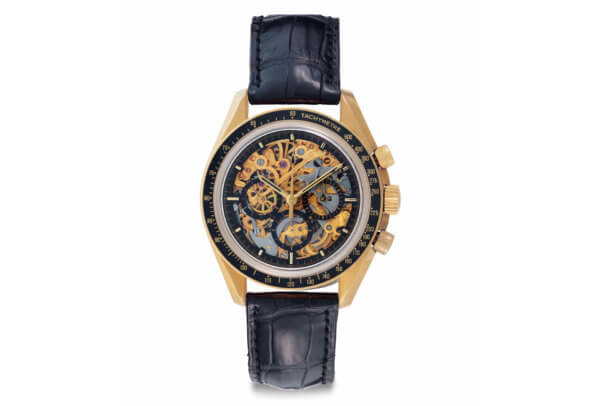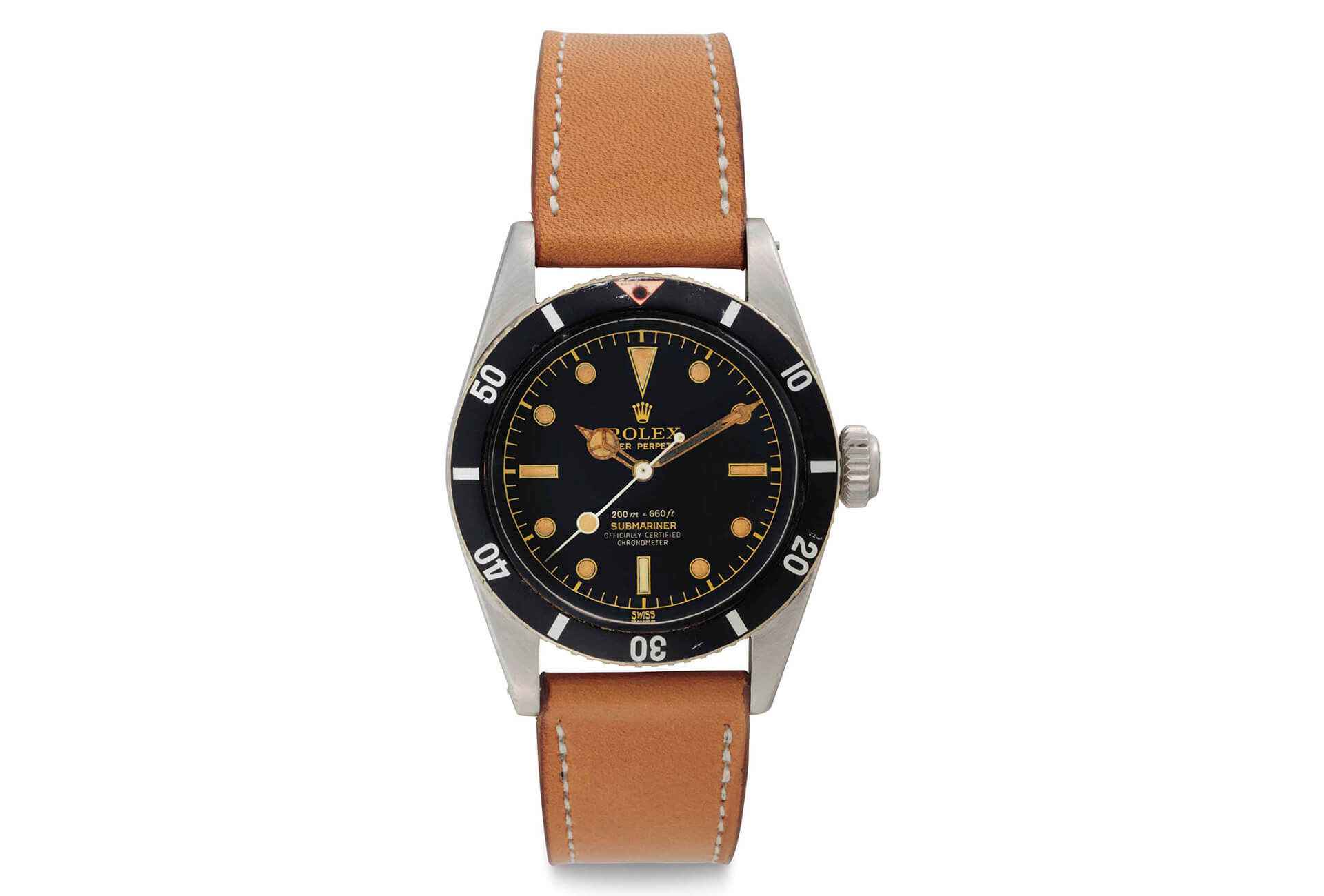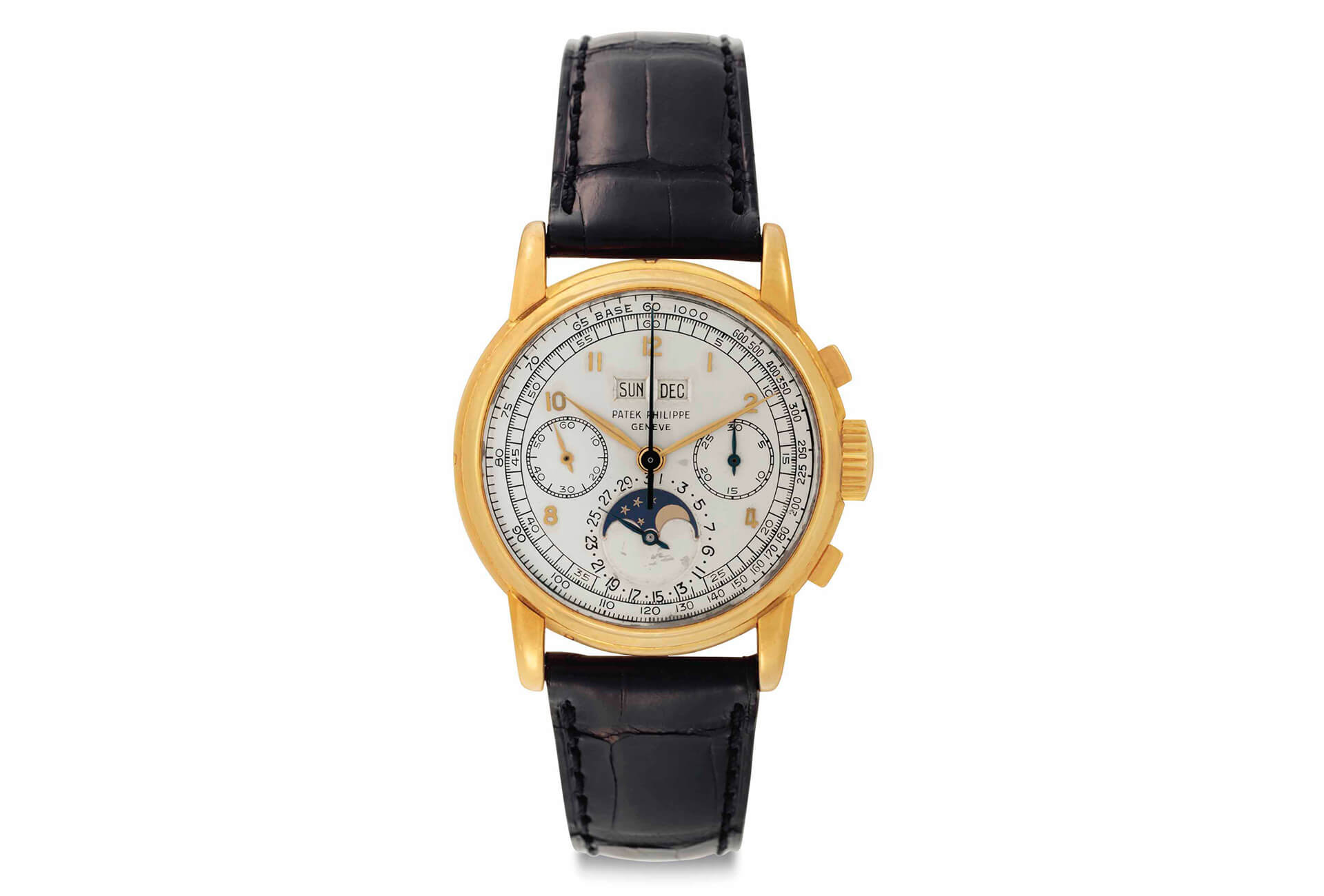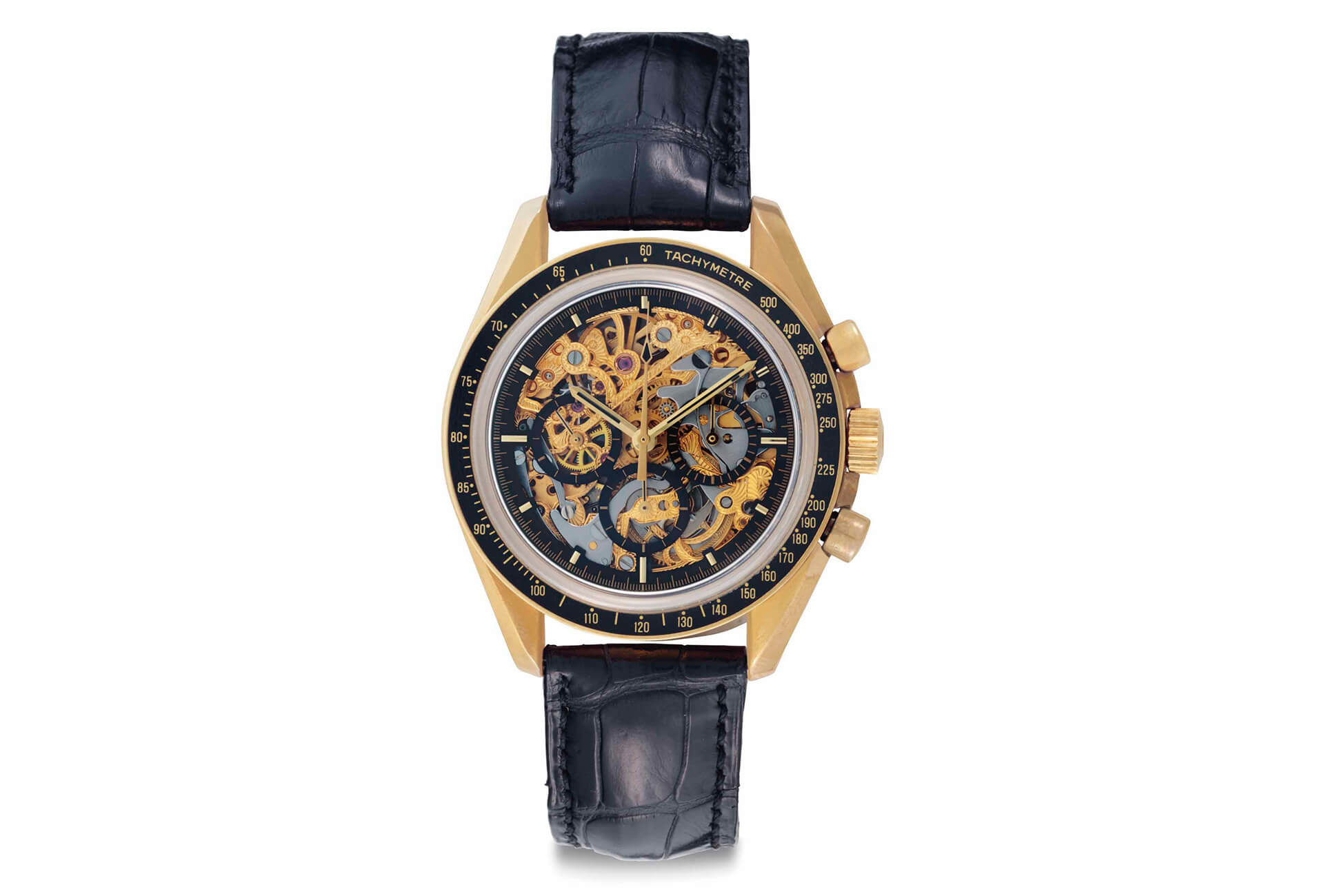It was but a couple short months ago that I found myself in one of Europe’s larger capital cities surrounded by a quietly well-known group of esteemed vintage watch collectors. As we were meeting on the Continent, this confab was most certainly not the well documented and summer camp-esque vintage Rolex collector’s meeting in Bali. No, this was a get-together of an entirely different sort, as there were only a scant four examples from the brand that carries the coronet as its logo (two were mine, I’m afraid). This was a meeting of seriously knowledgeable folks and of people who go deeply into specific brands or types or eras of watches no matter the brand. The fact is that they were once known as eccentrics because they dared to collect away from the household names of Rolex and Patek. But oh times have changed and the diversity of our hobby at least forms part of the basis of this Vintage Watch Market Update.
After a 2017 that could be summed up with one simple word – “Newman” – 2018 is notable for being, well, not so notable. For sure, there were big sales in the categories of Rolex and several seven-figure Pateks that crossed the block in November’s Geneva auctions, but there was no celebrity-owned piece that was unearthed from the baseboards of a forgotten farmhouse in rural Ohio once owned by an industrial magnate. It’s not that efforts weren’t put forth, though, as Phillips did their best to trot out a Rolex Submariner (no baseboards involved, just a house fire!) that had questionable ties to Steve McQueen and his stuntman pal. Unfortunately, some family members got in the way and the watch never made it to auction. Therefore, it was really a year that allowed collectors, the market figure, and social media to decide what was hot and what was decidedly not.
Heuer highs and lows
Let’s begin our Vintage Watch Market Update with a brand that caught fire a couple years back and then ended with a serious whimper at its one-brand auction debut in November 2017. It’s my contention that no name has risen and fallen as quickly as Heuer. As an example, a standard reference 2446 Autavia “Rindt” sold for over $60,000 at a Phillips auction in 2016 and can now be found for roughly $20,000 on the normal market. In less than two years, that’s a serious drop. Now, I mentioned November 2017 as the significant date of the Heuer downfall and I put a lot of the onus on the “Crosthwaite & Gavin” auction held by Phillips at that time. For sure, some pieces sold well, but it was a damn letdown for those used to tuning in to heavy, and theatric, bidding under the tent in Geneva. The auction was slow and, most of all, I think it revealed (surprisingly, which is odd) to most collectors that Heuer is simply not Rolex when it comes to widespread appreciation. Let’s also mention that there was a decent amount of investigative reporting out there from some serious collectors revealing that some of the watches weren’t as original as claimed. All told, the auction put a pin in what was likely an overinflated balloon to begin with. After all, that $20,000 Rindt was probably selling for a third of that price less than four years ago. Do I think Heuer will recover? I absolutely do and truly rare pieces such as the so-called “Skipperrera” reference 7754 and the lovely early Abercrombie & Fitch variants are leading the way. Don’t forget 1940s and 50s chronographs either as they’re still relatively good value. In any case, with a racing heritage that no brand can match, I predict a slower, perhaps more appropriate, rise back to the podium for Heuer.
If we talk about a brand that’s led the pack in 2018 in terms of garnering more and more collector interest, it has to be Breitling. A Vintage Watch Market Update without mention of the brand simply wouldn’t be right. Call it the combination of a resurgent company since George Kern’s leadership began over a year ago along with some truly careful and determined history-telling. Yes, Breitling is back in terms of new watches and although we’ve only just seen the first true semi-retro release in the new Premier line, the company opened its revamp by bringing back its old wingless logo and by putting a hell of a lot of focus on its heritage. For example, if Jeff Stein is seen as the expert when it comes to vintage Heuer, Fred Mandelbaum is Breitling’s historian. Wisely, Breitling involved Fred from the get-go of their redo to help educate would-be buyers and collectors on how the brand innovated over the years and while I am deeply biased, I’d say it’s been a smashing success. Bringing in a wise, and non-condescending, collector has brought Breitling credibility: especially after most collectors had written them off for making some highly loud and questionable models over the recent years. From a vintage perspective, we’ve seen prices rise accordingly across the board and, not surprisingly, good models have become very difficult to locate. Knowing Fred fairly well, I’m guessing that he’ll do his best to keep things moving in a controlled and sustainable manner at least from an official perspective. Translation: a Breitling-themed auction would come across as a huge surprise.
The big "R"
Another trend that’s blossomed over the past year is interest in watches from the 1940’s and 50’s. I mentioned this era when discussing Heuer, but interest in this area lies well beyond one brand. Specifically, I’m referring to larger chronographs (>36mm in diameter) and dress watches (generally >37mm) in stainless steel. Initially, it seems like these sub genres were discovered as value plays when 60s pieces became so expensive, but perhaps I’m reaching. The reality is that this period brought clean, classic looks along with, often, larger case sizes to some watch styles that feel more relevant to today’s likings. It’s all somewhat ironic because the smaller dress watch trend of the 50s and 60s likely represented some real innovation, but that’s simply not what people desire…yet. Look for brands such as Omega, Tissot, Longines, and even Doxa for nice examples from the period.

Up until this point, I’ve stayed away from the big “R”, but it’s impossible to avoid the elephant in the corner of the room. For the purposes of this article, I’ve not been asked to name a “Vintage Watch of the Year”, but I’ll do it anyway. There’s little doubt in my mind that the watch that found its way to more wish lists – including my own – than any other was the Rolex GMT Master. The GMT has been hot for a couple years, but it reached mega status this year perhaps due to the return of a stainless steel “Pepsi” model that debuted at Baselworld 2018. Whatever the reason, GMT’s no longer take a backseat to the Submariner. With good early matte-dialed 1675s easily cresting $20K, matte 16750s blowing through $15K, and, inexplicably, recent 16710s finding favor at or above $10K, the Rolex pilot’s watch is on fire. This, of course, speaks little to gilt and gilt gloss-dialed examples, where life seems to begin at $30K and accelerates very quickly. Can this runaway train of interest and pricing related to GMTs continue or are we headed for a slowdown? It’s anyone’s guess, but it’s clear that people are in love with a sporty Rolex that offers colors aside from black, white, and silver.
Value proposals
But it’s not only the GMT Master that has been on the rise when it pertains to Rolex. Everything from dark-dialed Dates to 60s Datejusts have been on the move. They’re all still relatively affordable – although some dealers would have you believe otherwise – but they’re now finally desirable. Regarding the other sports watches, after a relatively quiet period, vintage Submariners are highly in vogue again with red 1680s now reaching surprising levels. What’s taken me by surprise, though, is the sudden rise in values amongst later 80s and 90s applied dial – but with tritium – Rolex sports watches. For such a long time, applied indices and sapphire crystals were seen as verboten, but those days are long gone. Later 5513s with their applied markers are now coming dangerously close to the five-figure mark. Even the once-lowly Explorer II (ref.16570) has picked up as of late.
On the far more affordable side, it’s never bad advice to consider Japanese sports watches from the 60s and 70s.
Whether here or on Fratellowatches, I try to include some areas on where to find value within a Vintage Watch Market Update. For sure, this is a tougher assignment every time I write. Plus, I understand that “value” is a hard thing to define. What’s affordable to some simply may not be to others. Still, let’s give it a try. First and foremost, looking at 80s and 90s pieces such as the Speedmaster seems to be a good idea (see above in the Rolex discussion) as the dials still contained tritium and are beginning to age much in the same way as their 60s and 70s counterparts. On the far more affordable side, it’s never bad advice to consider Japanese sports watches from the 60s and 70s. For certain, Seiko leads the way and will continue to do so as I believe that their much-advertised push into the Western world on the high end will translate into more interest in their vintage pieces. Prices have been on the rise for some time, but when big name New York-based dealers begin advertising them, and they have begun to do so, you know that things have come full circle. But if Seiko has already become too much of the darling for bargain hunters, why not look into Citizen and even Orient for value? Yes, these brands can be challenging to research and repair as they lacked Western market presence 40-50 years ago, but they’re well made and worthy of collecting.
Ageing gracefully
Finally, if the auctions of 2018 taught us anything, it’s that condition is becoming more and more important. However, and I see it as ironic, there’s still a lot of silliness when it comes to advertising patina. Collectors who desire minty watches (some of which, by the way, look eerily too minty to be true in my book) are often the same ones who pay loads of money for so-called tropical watches. There’s apparently such a fine line between damage and aging that I’ve lost track. Yes, beauty is in the eye of the beholder (or seller?) and as of now, all is sailing along quite nicely. This is my one “beware” statement as I do think these types of aged pieces – especially when found on more common models – are most poised to see swings in value. I consider them like hot rods where value perception varies wildly depending on the owner. And like hot rods, one never really knows when something has been changed or modified.
I’ll be back in the next six months or so with another Vintage Watch Market Update. With several global macroeconomic topics afoot and a new year, there’s plenty of room for volatility. Until next time…













